The Photography of John McDermott: Interview
- FLAPPER PRESS
- Apr 19, 2021
- 7 min read
Updated: Nov 1, 2024
By Elizabeth Gracen:
The gorgeous photography of John McDermott is a portal to a world where temples and history mingle with beauty and grace. In these crazy days of lockdown and constriction, McDermott's work offers an invitation to adventure—a time and place where worship, contemplation, and exquisite monumental creativity carry the imagination out of the mundane. These photos are more than just eye-candy, they are a fantastically refreshing respite from the ordinary and reveal the elaborate uniqueness of our world and its people.
Visit asiaphotos.net to see more work from John McDermott.
I've known John for many years now and have seen his work develop and his creative eye move closer to that decisive moment associated with Henri Cartier-Bresson, the founder of modern photojournalism. In fact, McDermott's dedication to photographing the temples of Angkor in Cambodia truly exemplify Cartier-Bresson's belief that"We photographers deal in things which are continually vanishing, and when they have vanished there is no contrivance on earth [that] can make them come back again. We cannot develop and print a memory."
I recently reached out to John to talk to him about his extensive catalog and find out more about his current photographic passions.
EG: John, I’m quite familiar with your photography, but when I recently visited your website to see what you’ve been up to, I was so impressed by the scope of what you’ve done. Really terrific. Please tell our readers a little bit about yourself.

JMcD: Well, thank you very much for the compliment. I have been blessed with some grand opportunities, and I’ve collaborated with some very dynamic people on projects that took me to incredible places. All of which allowed me to evolve as a photographer.
I’m originally from Little Rock, Arkansas, where I got an on-the-job education in photography through a number of jobs that covered the spectrum from editorial magazine shoots to advertising campaigns to studio work—all across the board for a number of years. In the late 1980s, I moved to LA, where I ended up working in the feature film industry lighting film sets and doing assistant camera work. I happened to be back home in Little Rock in 1992 when, through a fluke of luck, I was asked to provide the photography for an article that a magazine based in Bangkok was doing on Clinton, who had just won the presidential election. That parleyed into a job offer from the magazine, and I took off to Bangkok, where I worked throughout the 90s as chief photographer for a business and lifestyle magazine that covered the Southeast Asian region.
In the early 2000s, I moved to Cambodia, where I opened a gallery of fine art photography in Siem Reap, which is the host town for the temples of Angkor, a major tourist attraction and one of the great wonders of the world. I also did a good deal of commercial photography specializing in marketing for hotels and resorts around Asia.
EG: One of the last times we were in contact, you were going through the arduous process of a reprint of your book, Elegy: Reflections on Angkor. It is a gorgeous collection of your photographs of Angkor. This was a project near and dear to you. Please tell us more about it.
JMcD: At the end of the 90s, Asia fell into a huge economic crisis that shut everything down there, including my job in Bangkok. As there were no new clients to be found anywhere, the only real opportunity was to find some sort of personal project. I had always been interested in sacred places and historical sites that resembled alien landscapes, of which there were a number throughout the region. Angkor in Cambodia, which was the ancient capital of the Khmer Empire, was high on my list. I had visited there in 1995 to witness a total eclipse of the sun and was completely blown away by it. Cambodia had been closed off to tourism for many years, as it had undergone a horrible war that completely devastated the country. In 2000 it was beginning to open up again, and I returned to have a look at the massive stone temples there and noticed that the first signs of tourism were just beginning to appear. This told me two things—one, that the fuse was lit, and tourism would not take long to explode there; and two, that when that happened, Angkor would never be the same. With this in mind, I decided to make Angkor my project and to do it before that happened.
My primary goal was to make a timeless portrait of Angkor in the window of time between the dark years of the war and the coming invasion of tourism and turn it into a book. It was a very special period of time for Angkor. I had a couple of years when there were hardly any tourists around the temples, just monks and local villagers, so I had it mostly to myself. Angkor is a huge place, as it was the ancient capital of the Khmer Empire, and at its height held almost one million people. There were dozens of temples spread over a couple hundred square kilometers. I spent the best part of four years developing this project.
I would shoot around Angkor for a month or two, then spend a few months developing film and making prints back in the U.S., where my wife was in grad school. Then I would go back to Siem Reap to shoot again while I exhibited the previous works in the Raffles Grand Hotel gallery near Angkor. The sales from these exhibitions fueled the project by generating enough income to keep the cycle going. After about five years, I was able to open a gallery of my own in Siem Reap, which by this time was flowing in western tourists. I still had not produced a book yet, but by 2009 I finally got it all together and was able to get it published. The first edition sold out, and in 2013 I published a second edition that we funded through Kickstarter. This was probably the one you are referring to.
EG: The New York Times wrote an article about your book and referenced you as the “Ansel Adams of Angkor.” Why do you think that comparison was made? How does that make you feel? Does his work have a particular influence on the work you do?
JMcD: Well, I worry that dear old Ansel must be rolling over in his grave. He is, of course, an inspiration to anyone who shoots classical black and white landscape work. I was extremely honored at such a comparison, but I don’t profess to come anywhere close to his genius and art. It is actually a little embarrassing. I always joke that I am still paying monthly dues to the author of the article.
EG: For Elegy, I believe you used infrared film? I’m assuming that you must do some of your work with digital, but do you still use film? Do you have a preference?
JMcD: Yes, I did use infrared film, which is now defunct of course. Kodak, who produced the film, discontinued it around 2007. I scarfed up all I could find when I found they were stopping production and was able to buy several hundred rolls, some of which I still have. But it has all gone digital now, including the ability to shoot infrared images, which makes these types of pictures much easier to produce. However, they do not have the texture of the old film, which I loved. It was a difficult film to work with and difficult to print, but the results were spectacular if it all came together just right.
All my color work is digital these days, but I do still use film in some of my standard black and white work. I don’t shoot a lot of infrared anymore, as it has become too mainstream and cliché with the easy availability in digital work and iPhone filters. It’s just not so special anymore, although I am waiting to use the film again with the right subject when I run across it.
Visit johnmcdermottphoto.com for more travel photography.
EG: Are you still living in Thailand? I think the last time we spoke (which has been a while) you weren’t certain about what you would focus on next. Do you have a particular passion about another subject as compelling as Angkor Wat?
JMcD: Actually, I left Thailand and moved to Cambodia in 2000, where I stayed until recently when we returned to the U.S. My wife and I decided to move back to the states to give our kids more educational and social opportunities. We were in Cambodia for almost 20 years, but the market in Siem Reap changed drastically in the past few years. It became difficult to maintain the overhead in a seasonal tourist market that had also changed its emphasis to a more mass-market, lower-budget style. In the past few years, I had also moved the focus of my photography to more commercial architectural work along with high-end hotels and resorts. I still have a list of alien landscapes I want to photograph artistically and hopefully once this pandemic is over, I can get back out there in the field. I am also contemplating a portrait project I have had in mind for a while, but that will certainly have to wait until we can connect socially again.
EG: I know that you have large-format prints on display at the National Museum in Phnom Penh, Cambodia, but where can our readers find your photographs and follow your work?
JMcD: At the moment, there are only a couple of places where I have prints up—I have one exhibition in place at the Park Hyatt Hotel in Siem Reap, and then before I left Cambodia in 2019, the Raffles asked me to provide prints to decorate the rooms and corridors of their two hotels in Cambodia, the Raffles Grand in Siem Reap and the Le Royal in Phnom Penh.
Prints and books are available online and can be ordered directly through me. The pictures can be seen at my two websites: asiaphotos.net for the Angkor work and other fine-art prints, and johnmcdermottphoto.com for other travel photography and my commercial work. I make all my own prints in a variety of sizes, and anyone who is interested can contact me at john@asiaphotos.net, and I can send a catalog with information and a price list. You can order books by sending me an email. You can also follow me at my Facebook account and on Instagram at @johnmcdphoto.
I am working on an e-commerce site, but it is not quite ready yet. Hopefully that will be up soon.
Elizabeth Gracen is the owner of Flapper Press & Flapper Films.
























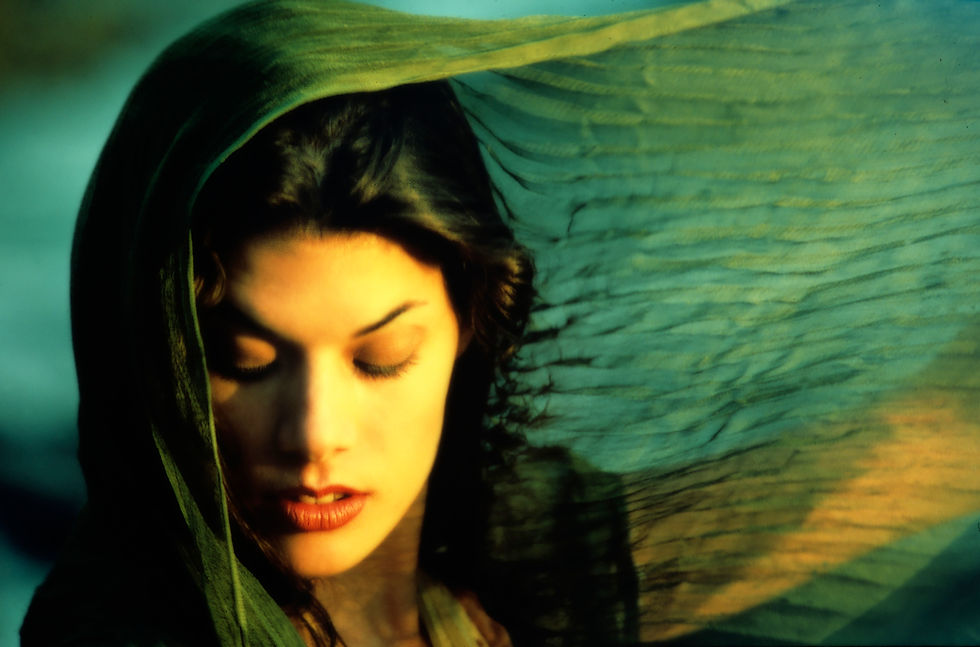
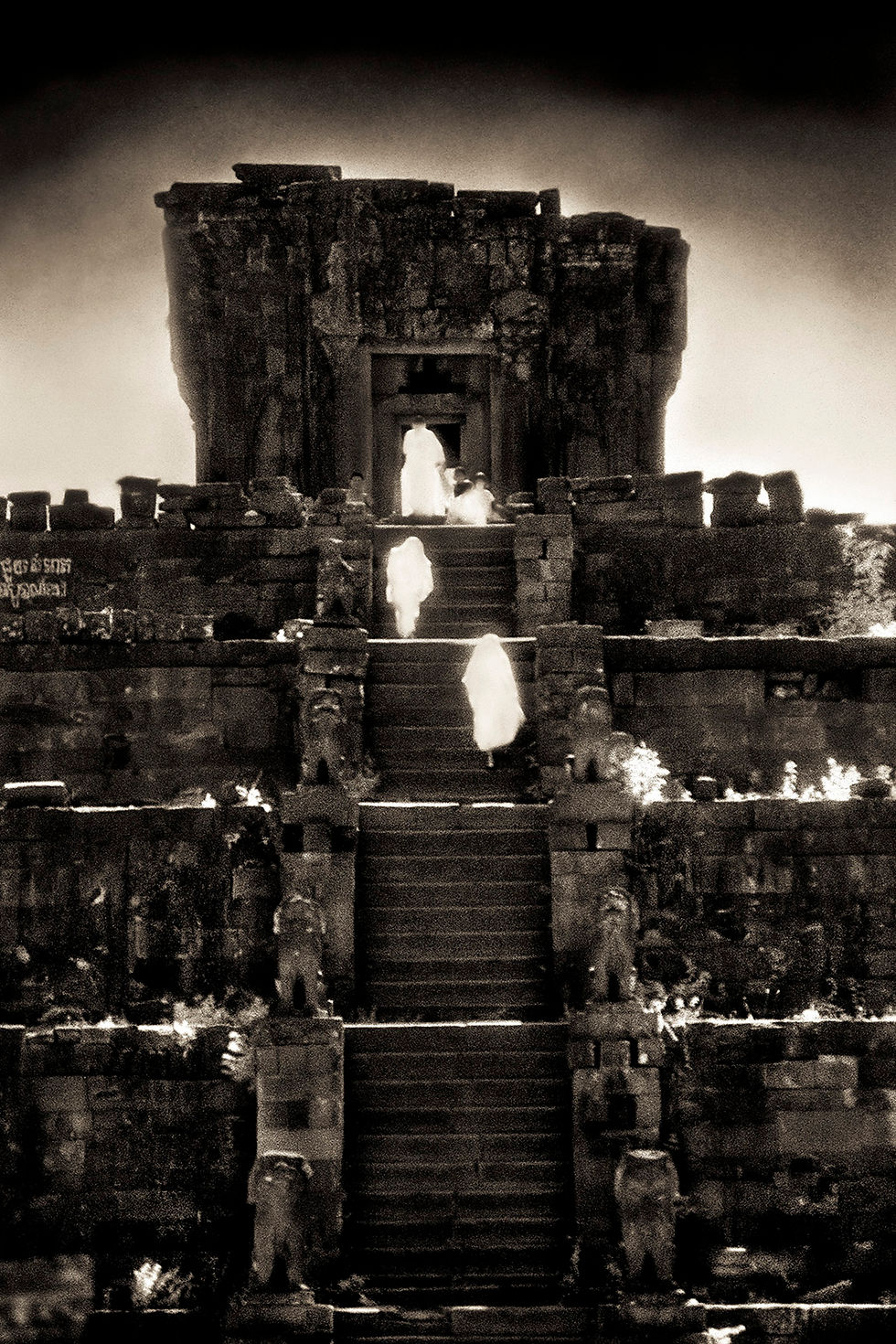
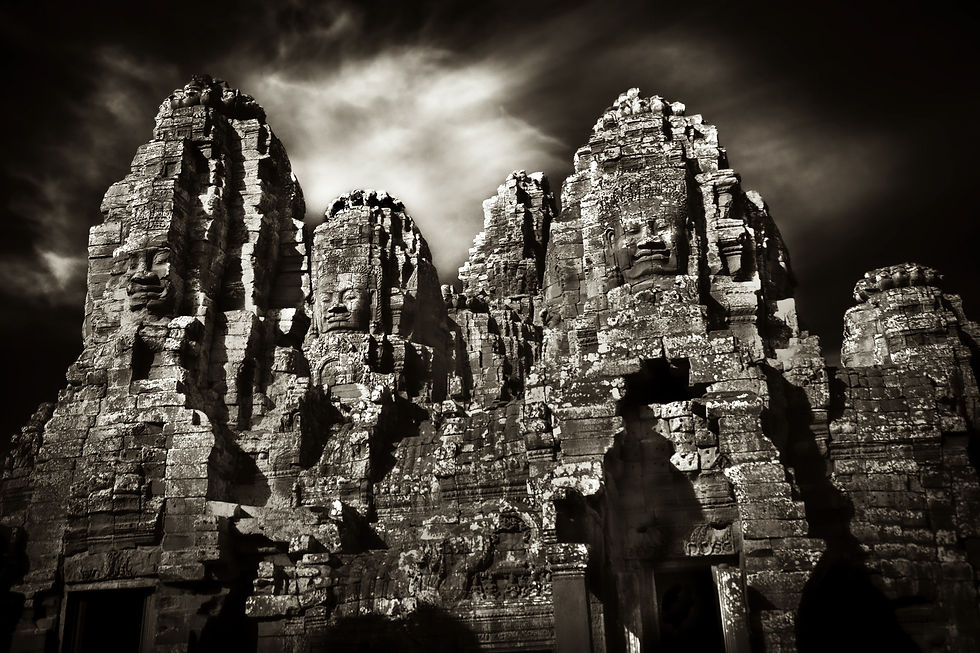

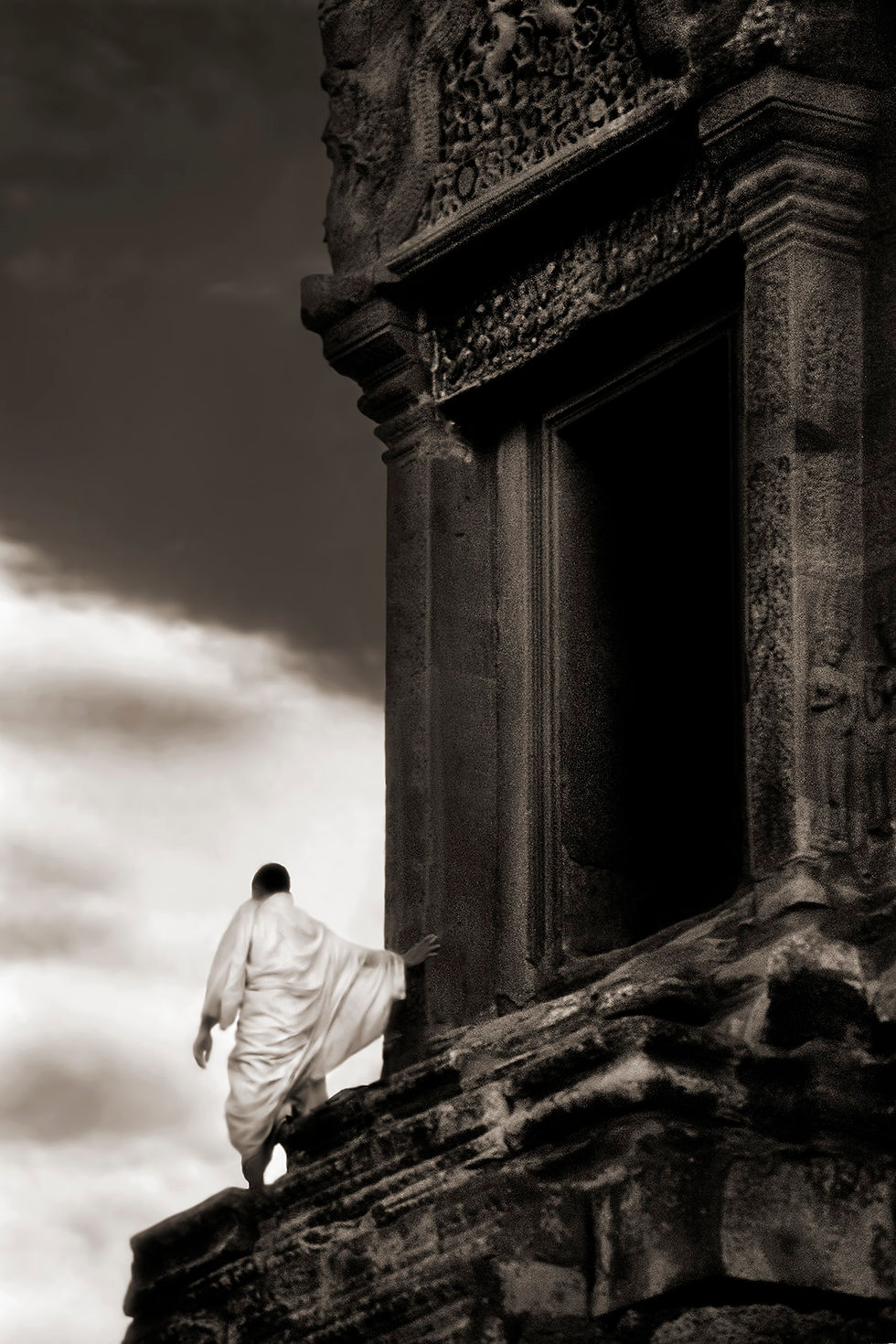








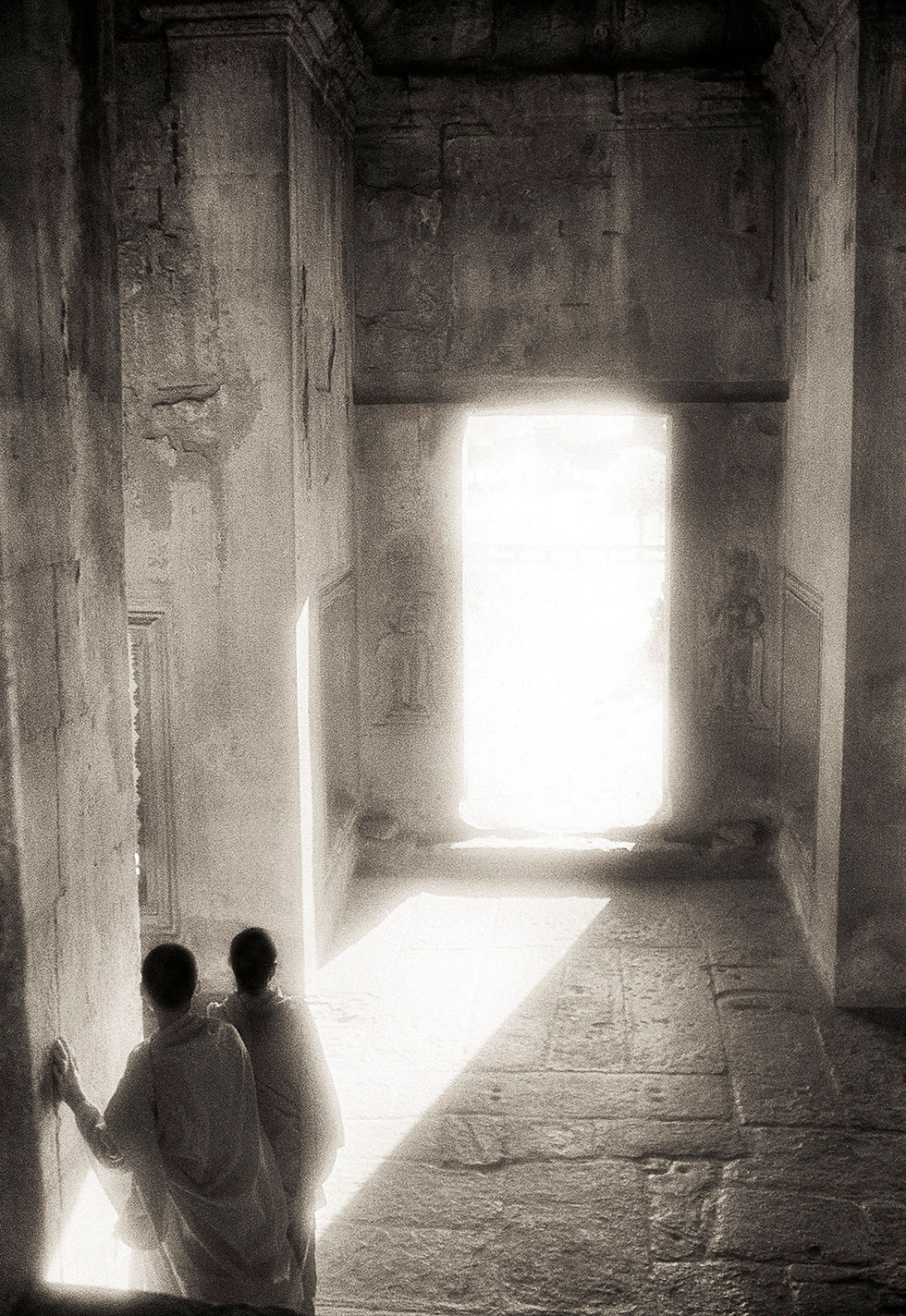
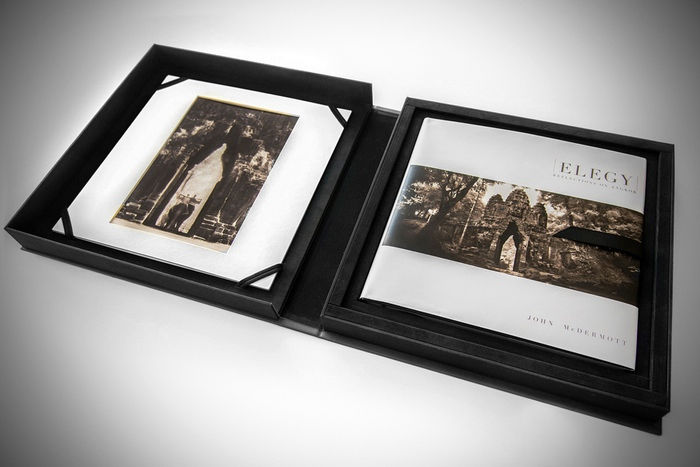
Thank you Sandra
I loved this article. And the photography is absolutely amazing!